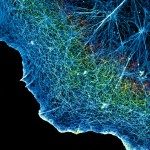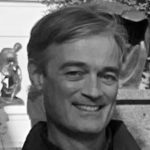Link to Pubmed [PMID] – 30835504
Annu Rev Biophys 2019 May;48:231-253
The genetic information that instructs transcription and other cellular functions is carried by the chromosomes, polymers of DNA in complex with histones and other proteins. These polymers are folded inside nuclei five orders of magnitude smaller than their linear length, and many facets of this folding correlate with or are causally related to transcription and other cellular functions. Recent advances in sequencing and imaging-based techniques have enabled new views into several layers of chromatin organization. These experimental findings are accompanied by computational modeling efforts based on polymer physics that can provide mechanistic insights and quantitative predictions. Here, we review current knowledge of the main levels of chromatin organization, from the scale of nucleosomes to the entire nucleus, our current understanding of their underlying biophysical and molecular mechanisms, and some of their functional implications.

